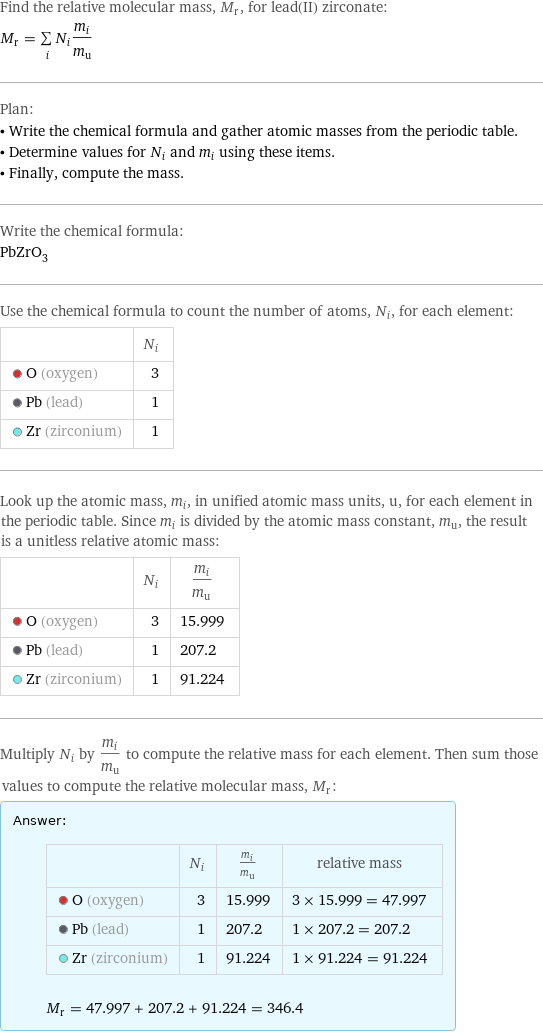Input interpretation

lead(II) zirconate | relative molecular mass
Result

Find the relative molecular mass, M_r, for lead(II) zirconate: M_r = sum _iN_im_i/m_u Plan: • Write the chemical formula and gather atomic masses from the periodic table. • Determine values for N_i and m_i using these items. • Finally, compute the mass. Write the chemical formula: PbZrO_3 Use the chemical formula to count the number of atoms, N_i, for each element: | N_i O (oxygen) | 3 Pb (lead) | 1 Zr (zirconium) | 1 Look up the atomic mass, m_i, in unified atomic mass units, u, for each element in the periodic table. Since m_i is divided by the atomic mass constant, m_u, the result is a unitless relative atomic mass: | N_i | m_i/m_u O (oxygen) | 3 | 15.999 Pb (lead) | 1 | 207.2 Zr (zirconium) | 1 | 91.224 Multiply N_i by m_i/m_u to compute the relative mass for each element. Then sum those values to compute the relative molecular mass, M_r: Answer: | | | N_i | m_i/m_u | relative mass O (oxygen) | 3 | 15.999 | 3 × 15.999 = 47.997 Pb (lead) | 1 | 207.2 | 1 × 207.2 = 207.2 Zr (zirconium) | 1 | 91.224 | 1 × 91.224 = 91.224 M_r = 47.997 + 207.2 + 91.224 = 346.4
Comparisons

≈ 0.48 × relative molecular mass of fullerene ( ≈ 721 )

≈ 1.8 × relative molecular mass of caffeine ( ≈ 194 )

≈ 5.9 × relative molecular mass of sodium chloride ( ≈ 58 )
Corresponding quantities

Molar mass M from M = M_uM_r: | 346 g/mol (grams per mole)

Molecular mass m from m = M_rM_u/N_A: | 5.8×10^-22 grams | 5.8×10^-25 kg (kilograms)